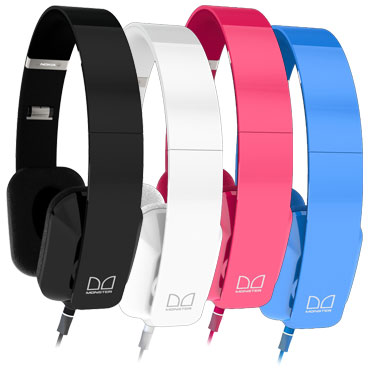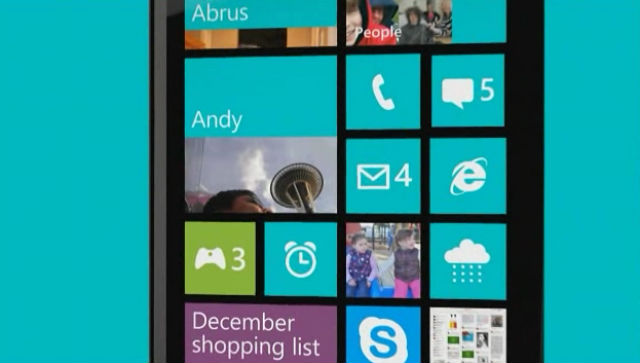Author: Richard
Video of the Week: Jackie Chan vs Jonathan Ross
Jackie Chan invites a punch to the face from Jonathan Ross
Video of the Week: Man Narrowly Avoids Being Hit by Car
Nokia Purity HD Headset Review
There’s a peculiarity in the technology world. Nokia is, in many ways, the undisputed media king. Dolby Surround Sound, untouchable cameras (HTC’s new flagship One series, boasting its camera, still pales beside the Nokia N8, not to mention the jaw-dropping 808 PureView), TV-Out, HDMI, superior audio output without headphones, and the 808 PureView records sound at such a high quality that it’s like you’re really there. Mass storage mode lets you drag any file onto the phone, and you can plug your USB stick into the phone and play the video, music or photos on a TV, which is great if you’re staying in a hotel. The N900 would wirelessly play media from computers on the Wi-Fi network, and these could then be played on the television via the TV-Out. And, if you were watching a film via TV-Out, you could multitask without interfering with the display on the television, say if you wanted to look up the actor on IMDB. Features such as these made Nokia phones incredibly close to genuine computers, and users were not left thinking “i’ll have to wait until i get back to my laptop”.
Yet, for some reason, Apple is considered the king of media. Apple, whose devices play only the iTunes file format – forget AVI files and click-and-drag here. Apple, who will play media from the phone or tablet to the television only if you own Apple TV. Apple, whose cameras have only just started to take decent photos provided it’s not nighttime, because an LED flash is apparently good enough. Apple, whose audio output through the iPhone’s speakers is so tinny and weak as to be barely listenable. Any sensible person would consider this a slight dichotomy – how could a company whose devices do more, regardless of the file format and output, and take better pictures, and sound better, and interfere less with the user’s actions, be considered inferior to a company whose devices do relatively little, and only if the user follows strict criteria?
The reason is probably because Apple invented the iPod, the go-to portable music player. Portable music is convenient, but it’s always been a trade off because of poor sound quality – audiophiles aside, many people neglect to think of the quality of headphones and consider them all equal. With the iPhone’s speakers so bad as to make music not worth listening to, it’s a sad fact that the supplied headphones aren’t much better. In recent times, though, headphones have received more attention, especially with the Beats headphones accompanying HTC handsets. Nokia has also been paying attention to this entertainment sphere and has now released the Nokia Purity HD Headset, designed to offer the best portable music listening experience ever. For those using them on a Nokia Lumia device, the headphone lead can also be used to pause, skip, forward or rewind tracks, answer calls and talk hands-free.
This is all good on paper, but do the headphones live up to the hype, especially the “High Definition” title?
In a word: Yes. The Purity HD headsets are extremely comfortable, designed for the padding to rest around the ears rather than on them. They come in a range of colours designed to match the colour of the phone, including black, cyan, magenta and white. The quality delivered through the headphones is second to none; few would argue against the fact that typically listening to music on a mobile phone yields a poorer listening experience than on a stereo or through other speakers. The Purity HD headset, however, seems to have finally overcome this. The audio levels sound exactly as they were intended, with a perfect blend of treble, mid and bass. Compared to other headphones, on-ear and in-ear, the difference in quality is noticeable immediately, especially on songs with prominent bass or low-end. Perhaps the ultimate positive result was that they even made the iPhone’s music sound good.
One of the main features of the Nokia Lumia range is the inclusion of music apps, like Nokia Music and Mix Radio. With Mix Radio, users can launch the app and choose a genre, from blues to jazz and pop to disco, then select a decade or a random playlist, with no login required, offline playback and no usage fee. In other words, the Lumia range provide a hefty amount of free music to be listened to at any moment in time even if the user doesn’t transfer any of their own collection to the device. And with top of the range headphones to accompany it, all Lumia owners can enjoy a stellar listening experience as and when they want to.
Apple made a huge marketing campaign over the iPhone containing an iPod. Perhaps now Nokia needs to make a similar campaign informing the public that they can have their own customisable, portable radio wherever they go, so they can break away from their standard playlists. And with the Purity HD headphones, they can finally enjoy listening to the music they enjoy the way it was meant to be listened to, no matter where they are.
Why Microsoft’s Windows Phone 8 Upgrade Path is Correct
Since Microsoft unveiled key aspects of Windows Phone 8 yesterday the company has received some flak for not allowing current generation Windows Phones to get the new operating system in full. Instead, handsets running Mango will get updated to Windows Phone 7.8, which brings the new start screen, continued updates, new apps, and more details will follow nearer the release date. While some users feel betrayed by buying a new handset like the Nokia Lumia 900 only to find it won’t receive Windows Phone 8, Microsoft is right in its decision.
The reason for the ire against Microsoft is because today people buy a phone and expect it to receive software updates in future. However, a look at competing systems shows it isn’t rosy for them either. Android is well known for its fragmentation, and there are modern Android phones that are at least one or two software updates behind the latest. Ice Cream Sandwich was supposed to be the operating system that changed that, but Gingerbread is still the most widely used Android software on the market. To make matters worse, while Microsoft is offering Windows Phone 7.8 to existing users, Google offers nothing to handsets that can’t get a full update. It also often leaves the update process to OEMs and carriers, whereas Microsoft is offering Over The Air (OTA) updates to bypass the carriers. This means that all Windows Phone users will be getting something, while a competing provider often offers nothing.
Microsoft’s approach also circumvents Apple’s problematic approach. Apple does not offer all features to all phones, even if it can run – Siri was an app that worked fine on the iPhone 4, but when Apple baked it into the OS they made it so it can only work on the 4S, forcing users who wanted it to upgrade. When the company offered iOS5 to the 3G and 3GS handsets, the Internet was awash with disgruntled customers who had notice a massive decline in performance and speed of their phones, because the hardware wasn’t capable of running it properly.
So what Microsoft has done is the sensible option – release a “Windows Phone 8 lite” for existing handsets so that the features that will run will be provided, and anything that can’t be provided will be reserved for new handsets. While it isn’t yet known exactly what features will be coming in 7.8, like Skype integration, at least users know they will definitely get an update to improve their experience, which is not true of Android users. Most of the changes in Windows Phone 8 are hardware related, like MicroSD support, multi-core support, higher screen resolutions and NFC, and of course these changes cannot come to existing phones just like previous iPhones did not sprout a front-facing camera or Retina display when Apple announced them. Indeed, this is a main point in the online discussion of events – while the tech blogs are quick to bash Microsoft’s decision, when Apple does something similar or even worse to its mobile consumers, silence ensues.
More to the point, Microsoft’s changes were wholly necessary. The existing kernel for Windows Phone does not allow for the seamless integration and interaction between Windows Phone and Windows 8, so a change had to be made. This change was better to happen now while the userbase is relatively small rather than wait for the operating system to gain more marketshare. By causing this disturbance now, Microsoft has hopefully laid a path to prevent an identical situation happening in the future, and more importantly has laid a very solid foundation for users to enjoy an excellent product in the near future, with unparalleled communication between the phone, tablet and PC. While some users may be peeved that they’re not getting Windows Phone 8 in full, the upshot is that a very new experience in computing will come out of it.
Video of the Week: Guitar Sling Fail





